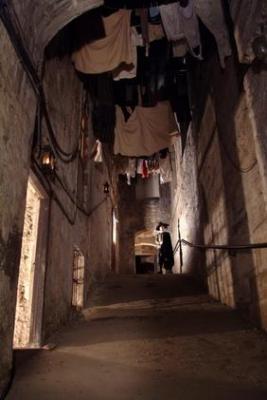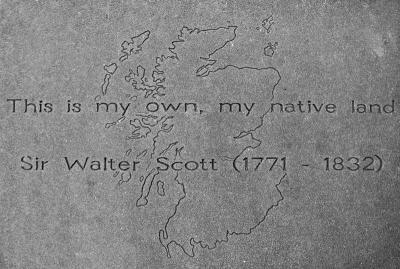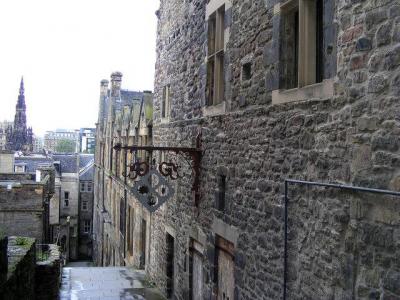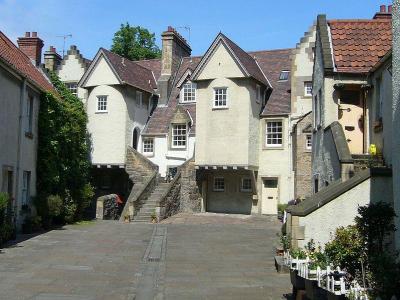History & Mystery in Edinburgh’s Closes
This posting is a guest posting by Margaret who works at VieAmhor Apartments, an edinburgh based holiday letting agency set right in the heart of Edinburgh’s old town.
As you walk up the Royal Mile, it’s hard to miss the arched entryways that sit on either side. Signposted with odd names like ‘Fleshmarket’, ‘Lady Stair’s’ and ‘World’s End’, these closes, wynds, courts and entries play an essential role in Edinburgh’s charming infrastructure.
Situated within the (former) town walls, the exceptionally narrow streets weren’t a mistake of engineering. With the threat of English attack always at the forefront, skinny streets surrounded by tall buildings provided early city dwellers with protection and peace of mind.
Edinburgh’s medieval honeycomb of hidden alleyways also contains some of the city’s best stories, secrets and mysteries. Many of Edinburgh’s most influential characters once called these closes home – and some are believed to still lurk among the cobblestones.
Mary King’s Close

According to local folklore, Mary King’s Close, situated in the heart of the Royal Mile near the City Chambers, is one of the most haunted places in Edinburgh. For centuries, the close – and all of its secrets – were buried below the city and forgotten. It wasn’t until April 2003 that it finally re-opened to the public.
Historians and archeologists believe the close was more than just a single narrow passageway, but actually an entrance to several more closes and multiple tenements owned by 17th-century advocate Alexander King. King named the close after his daughter Mary, who is thought to have herself grown to be a prosperous Edinburgh business woman.
Of the many gruesome stories associated with Mary King’s Close, the most disturbing is the rumour of what happened after its residents were struck with plague in 1645. Legend has it that the local council incarcerated the victims and bricked up the close, trapping everyone inside. Some say this is what earned the close its nickname as the ‘Street of Sorrows’.
Today, Mary King’s Close is home to one of the city’s most popular ghost tours, titled ‘The Real Mary Kings Close’.
Lady Stair’s Close

Whilst this close may be named after the widow of John Dalrymple, the first Earl of Stair, it’s most famous for its role in Edinburgh’s literary heritage. Lady Stair’s Close is now the site of Edinburgh’s Writers’ Museum. The Museum is dedicated to sharing the stories of Sir Walter Scott, Robert Louis Stevenson and Robert Burns – all of whom once called Edinburgh home.
Within the close sits Makars’ Court, itself another tribute to Edinburgh’s literary greats (‘Makar’ is the Scots term for ‘poet’ or ‘bard’). The Court’s flagstones are inscribed with the words of the city’s most influential authors, from medieval writers like John Barbour (c.1320-1395) and William Dunbar (c.1460- c.1520), to modern-day literary figures like Sydney Goodsir Smith (1915-1975) and ‘Prime of Miss Jean Brodie’ author Muriel Spark (1918 – 2006).
Advocate’s Close

Dating back to 1544, this recently renovated close was named in honour of Sir James Stewart of Goodtrees. Stewart was Lord Advocate of Scotland after the Glorious Revolution, serving from 1692 to 1715.
Famous former residents of Advocate’s Close include Adam Bothwell, Bishop of Orkney and head of the Augustinian monastic community at Holyrood Abbey from 1568 to 1582, and John Scougal, an official painter to William III and Queen Mary.
Visitors to Edinburgh can stay in Scougal’s former home and painting studio, now one of VieAmhor’s apartments. The close is also the site of Edinburgh’s newest ‘hidden’ gem, the cleverly named Devil’s Advocate bar and restaurant.
White Horse Close

Situated near the bottom of the Royal Mile, this often-overlooked close is perhaps the most picturesque of them all. Whilst many of the buildings within White Horse Close have been rebuilt and converted since the Middle Ages, this historic corner of Edinburgh’s Old Town hasn’t lost its charm.
During the 16th-century, White Horse Close contained the Royal Mews, and legend has it that the close is named after a famous horse that was stabled there – Mary, Queen of Scots’ beloved white palfrey. However, it’s more likely that the close gets its name from the ‘White Horse Inn’, built by Laurence Ord in the 17th-century.
It’s also thought that the close is where Jacobite officers stayed when Bonnie Prince Charlie occupied Holyrood Palace during the Jacobite Rebellion of 1735. Less than 60 years later, the close served as the birthplace of William Dick, founder of Edinburgh’s Royal Dick School of Veterinary Studies.
These are just four of more than 70 closes, courts, wynds and entries situated off the Royal Mile. Each one contains its own unique history, and for those wanting insight into medieval Edinburgh life, there’s no better place to start looking.
Image credit:
Mary King’s Close image by The Real Mary King’s Close via Wikimedia Commons
Makars’ Court image by Stefan Schäfer, Lich via Wikimedia Commons
Advocate’s Close image by Ann Harrison via Wikimedia Commons
White Horse Close image by Kim Traynor via Wikimedia Commons


 Donald likes this.
Donald likes this.